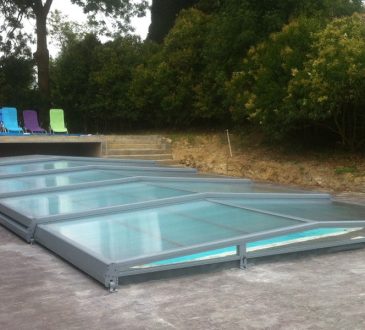
A rich, jet-black driveway makes your whole property feel cared-for-but only if you stay ahead of the tiny cracks that can turn into nasty potholes. The good news is that you don’t need heavy machinery or a paving crew to keep trouble at bay. Armed with a few smart products and a quick inspection habit, you can stop water in its tracks, keep Mother Nature from prying your driveway apart, and save thousands on a full rip-and-replace job later. Grab a pair of work gloves, roll up your sleeves, and let’s break down the essentials.
What Causes Asphalt Cracks?
Your driveway faces four constant stressors: sun, water, weight, and time. UV rays (read more here) bake out the natural oils and make the surface brittle-much like sun-dried leather that stiffens and splits. Moisture then works its way into hairline seams and softens the gravel base beneath.
Traffic adds the next layer of stress. Every time a car or delivery van rolls over the same tire paths, it squeezes and shifts the aggregate. Salt and de-icing chemicals speed things up by pulling even more water into the mix. If those gaps stay unsealed, they widen quickly, weeds take root, and ants tunnel through the softened base. When that happens, even the best driveway paving contractor will urge early repairs rather than waiting until the whole slab fails.
Freeze–Thaw Cycle Dangers
In cold climates, the freeze–thaw cycle becomes your driveway’s worst enemy. Water expands roughly nine percent when it turns to ice. That’s enough to pry a pencil-thin crack wider overnight-and it repeats every time temperatures bounce above and below freezing. One brutal winter can undo years of careful maintenance if you let moisture stick around.
A consistent sealcoat maintenance plan is your shield. Think of sealcoat as sunscreen and raincoat combined: it blocks UV damage and locks out liquid. Apply a new coat every two to three years on a warm, dry day, and don’t forget to tape off the edges so you get full coverage. If the surface looks more faded gray than deep black, scratch it with a fingernail; a chalky feel means you’re overdue for fresh protection. Keep a spare pail of sealcoat on hand so you can touch up scuffs the moment they appear.
Follow this link https://www.fhwa.dot.gov/pavement/preservation/ppcl01.pdf for additional information.
Proper Drainage Solutions
Even perfect sealant fails if water puddles on the surface. Rain should slide away, not sit and soak. You can fix most drainage hiccups without calling an engineer:
- Check the slope
A driveway should drop about ¼ inch per foot toward the street or lawn. Use a long level and board to spot low spots, then mark them with chalk. - Patch depressions
Compact clean gravel into shallow dips, top with a hot-mix patch, and tamp it flush. The gravel bed keeps the patch from sinking under tire weight. - Install simple drains
A French drain along the edge or a trench grate at the garage door whisks runoff to safer ground. Wrap perforated pipe in fabric so silt can’t clog it. - Try light milling
On older drives, a quick pass with a milling machine shaves high spots, restores a gentle crown, and improves flow before you reseal. The pavement milling process removes only the top layer, so most of the base stays intact. - Keep run-off channels clear
Blow leaves and mulch off the edges each fall. Organic debris traps moisture and invites moss that stays damp even on sunny days.
Choosing the Right Filler
Not every crack filler is created equal. For hairline fractures under ¼ inch wide, a liquid asphalt emulsion seeps in, self-levels, and stays flexible as temperatures swing. Wider gaps need a rubberized hot-pour sealant that bonds tightly to both crack walls and stretches a bit when the pavement moves.
Always clean the joint first with a wire brush or compressed air; dust acts like Teflon and stops the material from grabbing the sides. If a crack is more than an inch deep, backfill the bottom with clean sand so the hot material doesn’t keep sinking.
Once the surface cures, adding crisp striping at the apron or parking pad sharpens curb appeal. Following professional line-striping standards ensures durable traffic paint that stays bright through sun and rain-and a fresh line reminds drivers where to park so they don’t crush the edges.
About All Star & Stripe Lebanon: if a project feels bigger than a weekend, these local specialists can tackle everything from deep patching to full-lot striping without disrupting your daily routine.
Routine Inspection Checklist
A ten-minute walk-through every spring and fall can save hundreds of dollars later. Bring a flashlight-even in daylight the beam makes small texture changes pop out.
- Fine surface cracks – Seal any slit wide enough for a credit card; they spread faster than you think.
- Edge raveling – Replace missing gravel before the border unravels farther.
- Low spots or pooling water – Mark them for drainage fixes or patching before they sink deeper.
- Faded color – A dull gray tone signals it’s time for sealcoat; darker black means more UV-blocking oils remain.
- Flaking sealcoat – Touch up bare areas so sunlight can’t oxidize the asphalt below.
- Loose aggregate – Sweep up stray stones; they create tiny divots that collect water.
- Overhanging vegetation – Trim grass or roots creeping onto the pavement so they don’t undermine the edges.
Snap a few photos during each walk-through. Comparing pictures year to year helps you catch slow changes you might miss and proves the value of regular upkeep-especially when it’s time for partial asphalt resurfacing down the line.
Keeping up with these simple chores means you won’t wake up to a crater in your driveway-or an expensive full replacement. With timely filling, good drainage, and two quick inspections a year, your asphalt can stay smooth and crack-free for fifteen to twenty years. Pull on those gloves this weekend, give your pavement a closer look, and let easy upkeep pay you back in seasons of reliable, pothole-free parking.




